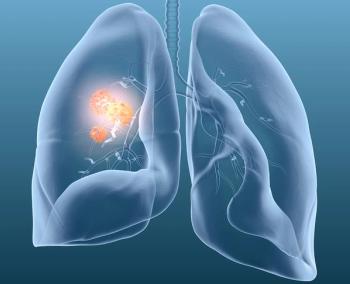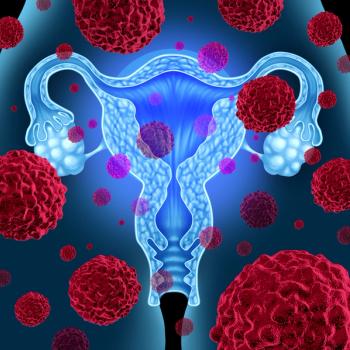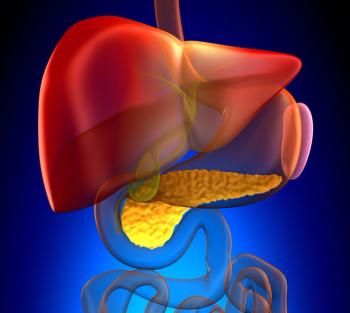
Post-IO Curative Treatment Conversion May Prolong Survival in Liver Cancer
Receiving treatment at an academic center may improve the probability of receiving subsequent curative care among those with hepatocellular carcinoma.
Curative treatment conversion (CTC), although infrequent, correlated with significantly improved survival in patients who received prior immunotherapy for hepatocellular carcinoma (HCC), according to findings from a representative cohort study published in Liver Cancer.1
Among 4765 patients with HCC, 3.2% (n = 138) received curative therapy following immunotherapy, which included resection in 54.3% (n = 75), local ablation in 25.4% (n = 35), and transplantation in 20.3% (n = 28). Compared with 4101 patients who did not undergo curative therapy, those who received CTC experienced significantly prolonged overall survival (OS) outcomes (HR, 0.15; 95% CI, 0.11-0.22; P <.001), with the highest survival probabilities in those who underwent resection, followed by transplantation and local ablation (P <.001).
Based on multivariate analysis, receipt of CTC independently correlated with better OS outcomes (HR, 0.20; 95% CI, 0.11-0.37; P <.001), as did receiving treatment at an academic center vs a nonacademic facility (HR, 0.70; 95% CI, 0.59-0.82; P <.001). CTC using ablation (HR, 0.21; 95% CI, 0.05-0.86; P = .03), resection (HR, 0.18; 95% CI, 0.08-0.40; P <.001), and liver transplantation (HR, 0.28; 95% CI, 0.09-0.87; P = .03) were all independently correlated with improvements in OS. Following additional analyses, investigators noted that the OS benefit seen in an academic center occurred independently of CTC.
“The data we reviewed showed that patients who received follow-up transplants or tumor removal after immunotherapy reduced the size of their tumors lived much longer than patients who just remained on immunotherapy…. Performing liver transplant following immunotherapy isn’t yet common practice,” senior study author Ju Dong Yang, MD, medical director of the Liver Cancer Program at Cedars-Sinai, stated in a press release on these findings.2 “This is unfortunate, as patients with advanced liver cancer often die without such treatment—even if their cancer is under control—because they also have other liver ailments. A transplant leaves the patient with a healthy liver.”
Investigators collected information from the US National Cancer Database on patients with HCC who received immunotherapy in the frontline setting between 2017 and 2020. The study included a collection of demographic, socioeconomic, and clinical information related to these patients, which were summarized via standard descriptive measures and compared based on receipt of subsequent CTC using Pearson’s chi‐squared test for categorical variables and the Mann‐Whitney‐Wilcoxon test for continuous variables. Additionally, investigators estimated survival outcomes based on the Kaplan-Meier method.
Overall, the median age of patients was 66 years, and most were male (81%). The most common disease stages per AJCC criteria were stage T4 (33%), followed by M1 (32%) and N1 (22%). Patients experienced a median of 3.0 months (IQR, 1.3-5.5) from the time of immunotherapy to initiating curative treatment.
In patients who received CTC and those who did not, respectively, the median age was younger (63 years vs 66 years; P = .004), and the median tumor size was smaller (57 mm vs 75 mm; P = .002). Additionally, those in the CTC population were more likely to receive care in academic health facilities (78% vs 48%; P <.001), and in the northeast region (35% vs 25%) or south region (44% vs 39%; P = .002).
Multivariate logistic regression analyses revealed that factors correlating with receipt of curative treatment after immunotherapy included the absence of node metastases (OR, 0.16; 95% CI, 0.02-0.56; P = .02) and receipt of treatment at an academic health center (OR, 3.40; 95% CI, 1.68-7.38; P = .001).
In 138 propensity score-matched pairs of patients between the CTC and non-CTC populations, receipt of CTC correlated with significantly longer OS (HR, 0.22; 95% CI, 0.14-0.33; P <.001). Additional matching analyses showed improved OS outcomes with the receipt of resection (HR, 0.05; 95% CI, 0.02-0.11; P <.001), local ablation (HR, 0.19; 95% CI, 0.09-0.38; P <.001), and transplantation (HR, 0.16; 95% CI, 0.07-0.36; P <.001). In inverse probability of treatment weighting analysis, receipt of CTC showed a significant association with improved OS (HR, 0.20; 95% CI, 0.14-0.29; P <.001).
“When our physician-scientists create studies based on patient needs and then apply their findings to patient care, it improves outcomes for everyone we serve and for patients around the world. As an academic medical center, that is our mission,” Robert Figlin, MD, FACP, interim director of Cedars-Sinai Cancer, stated in the press release.2
References
- Choi GH, Kim HS, Luu M, et al. Curative treatment after immunotherapy leads to excellent outcomes in patients with hepatocellular carcinoma. Liver Cancer. Published online July 24, 2025. doi:10.1159/000547230.
- Elston C. Surgery after immunotherapy boosts survival for liver cancer patients. News release. Cedars-Sinai. November 13, 2025. Accessed November 13, 2025. https://tinyurl.com/595zhjy5
Newsletter
Stay up to date on recent advances in the multidisciplinary approach to cancer.






















































































